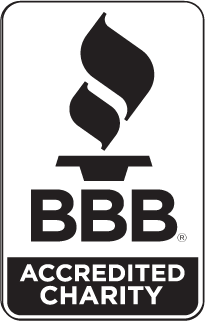On the Ground: Inside the Flooded Homes of Kherson
The June 6 destruction of the Kakhovka Dam in Ukraine was a catastrophic turn in the war for Ukrainians in the region. Project HOPE visited residents to see the devastation firsthand.

Early in the morning on June 27, we set out from Odesa city toward the quaint village of Novotymofiyivka in Ukraine’s Mykolaiv region, which borders Kherson. It took us approximately four hours to cover around 250 kilometers. As we approached the deoccupied region of Kherson, the scars and wounds of battles and shelling became increasingly visible.
The once vibrant fields and swaying trees had given way to destroyed buildings, bumpy roads, damaged fuel stations, mine signs, shattered homes, and burnt vehicles along the way. The piercing noise of our car’s tires on the road indicated the presence of tanks and heavy military vehicles in the area.


Despite having traveled this route multiple times and witnessing the aftermath of the Russians’ departure, the emotional impact never diminished. It was impossible not to wonder: Why? How? What for?
We passed through several checkpoints and eventually left the main road to reach the village of Novotymofiyivka. Situated along the Ingulets River, the village had been home to around 600 residents until Russian soldiers occupied it until November 12, 2022. However, due to the war’s aftermath and subsequent flooding following the destruction of the Kakhovka Dam, the population had dwindled to approximately 350, including internally displaced people from nearby villages.
Having arrived a little over two weeks after the flooding, we were unsure what to expect. Would the water still be present? How severe was the damage? Would the people be willing to share their stories?
After passing the last military checkpoint near the village, it became evident that photography was not allowed and welcome here. Nonetheless, we managed to take some pictures of the surroundings through the car windows. The once lush greenery had transformed into a brown-yellow landscape, marked by the visible waterline. It was difficult to comprehend that this place had been completely submerged.

As we parked near the local supermarket, I met Anna, a local volunteer who coordinated aid efforts in the village. Her house was located a bit further from the river, so she agreed to show us the flooded area where her neighbors live.
Walking down to the flooded zone, I noticed waterline marks on the fences and trees, serving as a reminder of the flood’s height.
Two ladies met us, and one of them decided to show us her house. Pain and loss were etched on her face, reflecting a mix of anger and confusion.
“We spent our whole lives building this, and then this happened,” one of them shared. They recounted their midnight escape to the village center as the waters rose, leaving their homes in ruins. “I grabbed the chickens and fled in the middle of the night. It was terrifying; the rushing water sounded like a piercing whistle as it engulfed our homes.”



Entering the house, a nauseating stench of dampness and silt filled the air. Dilapidated walls, scattered furniture, and hanging ceilings that felt like they would collapse any minute painted a grim picture.
Among the devastation, I noticed water bottles with the Project HOPE logo. It was heartening to know that our assistance had reached these individuals by boats in the first week. They emphasized the essential role of water in their lives, serving as their drinking source and the only safe option amidst the contamination caused by the floods.
Anna then took us to another house situated closer to the river. There, we met Alexander, a security guard in a kindergarten, who had witnessed his hard work and savings crumble before his eyes. “Everything was flooded, and now everything is decaying. I dedicated my whole life to building this,” he shared with a heavy heart.

Walking through his damaged home, I noticed a pile of new tiles. He explained that he had recently completed renovation work, which had now gone to waste. Despite their efforts to salvage some electrical appliances, the speed of the floodwaters overwhelmed them.
Next, we made our way to their neighbors. In their yard, we met Volodymyr, a 65-year-old driver. He shared his heartbreaking story, revealing that they were currently living in a gazebo with mattresses as makeshift beds while their belongings lay scattered in the yard. The floodwaters had ravaged his home, leaving behind only memories of a once-thriving life. The scene was all too familiar — a completely dilapidated house, fallen clay from the walls, and a roof covered in mold. It was stifling to breathe in such an environment.
“I worked hard all my life, saved money, and now I have nothing,” Volodymyr said.
As we exited the house, we met his wife, and my spirits were momentarily lifted as I saw kittens playing nearby. “We took the cats under our sleeves to save them,” she shared, a glimmer of hope shining through her words.


Volodymyr then took out his phone and showed me a video of him boating to his house during the early days of the flood. The waters were so high that only rooftops and treetops remained visible. “No way,” I thought, struggling to grasp the reality. Unfortunately, it was indeed the same place.
Our final encounter was with Viktor and Zina, a couple burdened by their losses yet determined to rebuild. Zina greeted us on the porch with a bittersweet smile, her eyes filled with tears. “We underwent a major renovation — gym, swimming pool, sauna,” she proudly shared. “It took us 30 years to build it all. And now look,” she exclaimed, her voice rising with anger. Their story mirrored those of others, with their roof still intact, but everything beneath it submerged beneath the floodwaters.
As they guided us around, Zina shared heartbreaking details about her family: “My son was taken away by the Russians and has been in captivity for a year and two months,” she said. Her voice quivered, but she managed to hold back tears.
Listening to their stories, I found it increasingly difficult to bear witness to such pain, loss, and destruction. Yet, towards the end, I had a conversation with Viktor that lifted my spirits. He spoke with a smile on his wrinkled face, radiating kindness and hope.
“We will fix everything,” he said. “Step by step, we will rebuild it all. We had perfect conditions, a beautifully renovated summer kitchen that I did myself. Now we have to start over, but we will survive. We must.”



Leaving Novotymofiyivka, the images of flooded houses, ruined gardens, and unyielding spirits stayed with me. The villagers’ plea to not be forgotten resonated deeply within our team. It is crucial that their voices are heard, and the world recognizes the urgency of providing assistance to these resilient communities.
Throughout our visit, one thing became clear — these resilient people had lost everything they had worked for. Yet, their determination to rebuild their lives remained unshaken. They welcomed us with open arms, eager to share their stories and raise awareness of their sorrow.
Artem Murach is Project HOPE’s Information Coordinator in Ukraine.







